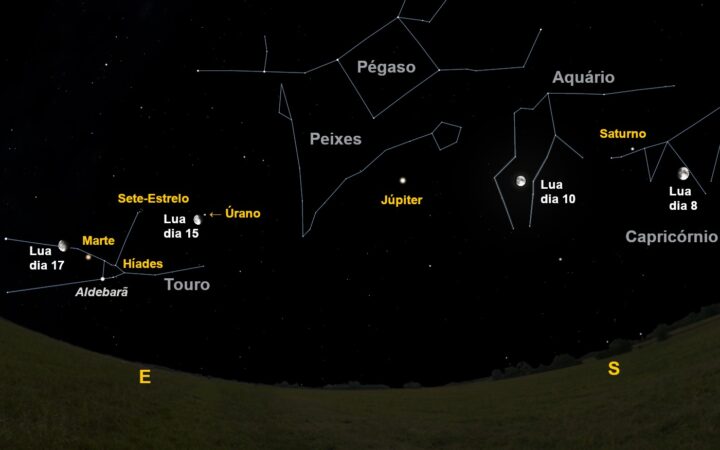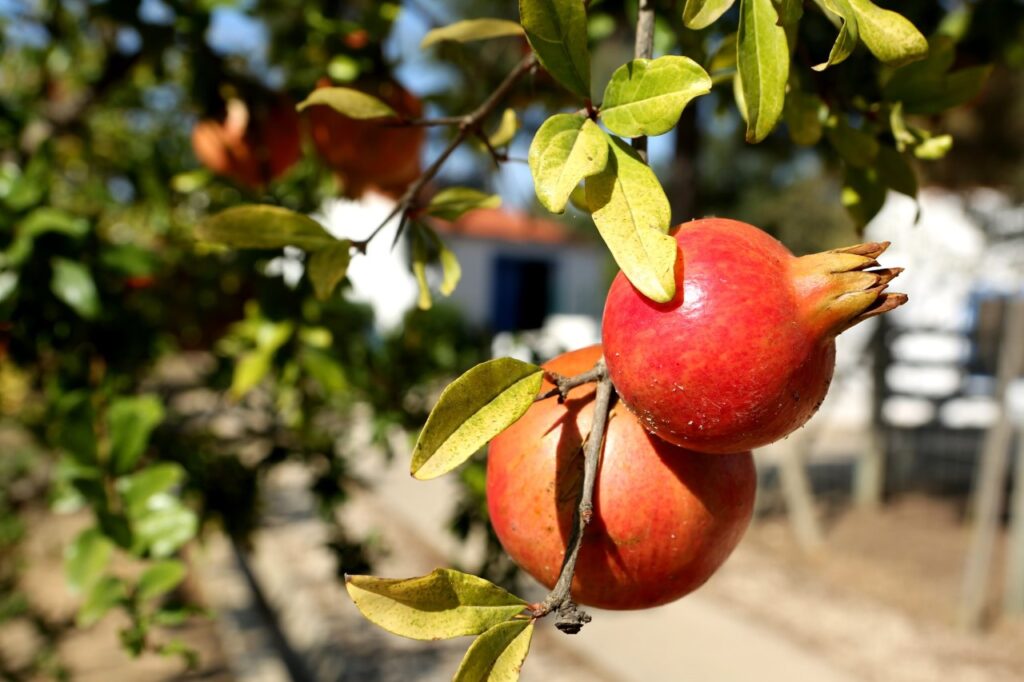The crescent moon is the first significant astronomical event of this month, taking place in the late afternoon of the 3rd. The Moon will appear next to Antares, a supergiant star (with 883 times the radius of the Sun), whose reddish color ( rivaling that of Mars) and location in the sky give us the feeling that it is the heart of the constellation Scorpio.
On the first Monday of this month, the 5th, will be the 45th anniversary of the launch of the Voyager I probe. In addition to this probe being part of the longest-lived mission of the US space agency NASA, it is the first object created by humanity to enter interstellar space.
On the night of the 6th, we will find the planet Mars near Aldebaran, the eye of the Taurus constellation. In this constellation, there are two star clusters that look like flies swarming a bull. The Hyades are a cluster of stars located on the face of the Taurus, while the Pleiades (or Seven-Star) are on its back. This last star cluster will be visited by the Moon on the night of the 15th.
On the 15th, the 5th anniversary of the end of the Cassini-Huygens mission (a joint mission of the European space agency ESA and NASA) will take place, which ended with the plunge of the Cassini space module into the atmosphere of Saturn.
This planet will be seen at the foot of the Moon on the night of the 8th, while, three days later, our natural satellite will have already moved to Jupiter.
In turn, on the night of the 10th, the full moon will take place. This event precedes by two days the sixtieth anniversary of the famous speech “We choose to go to the moon” delivered by John Kennedy at Rice University. This speech reminds us of the importance of exploring space and doing things that lead us to do our best.

Continuing the lunar theme, on the 14th, the Moon will pass in a direction so close to that of Uranus that, in mainland Portugal, the Moon will cover that planet. It should be noted that, at 22:XNUMX (continental time), the Moon will still be so low that it will not allow a good observation of the beginning of this event.
However, at 23 pm, anyone who has binoculars or a small telescope, and is in a relatively dark place, will be able to see the planet Uranus reappear on the dark side of the Moon.
On the night of the 16th, Neptune will be in opposition, that is, in a position diametrically opposite to the Sun, being the time when this planet is closest to us.
Despite this, observation of Neptune will continue to require the use of a telescope more than eight inches in diameter. Ten days later, Jupiter will be in opposition.
At dawn on the 17th, the Moon will be seen slightly above the planet Mars. In the afternoon of the same day, the Moon will reach the waning quarter phase.
As they begin to meet in directions too close to the Sun, by the middle of the month, Mercury will no longer be visible at dusk, while Venus will no longer be observable at dawn. However, Mercury will reappear in the last dawn of September.
At two hours and four minutes on the 23rd, the Sun will cross again with the plane of the Earth's equator. From this moment on, the Sun will be seen below the equator, hence, in the northern hemisphere, we designate this event as the autumnal equinox.
Despite this name, it is only three days later that the duration of the night will be the same as that of the day, because, due to atmospheric refraction, the Sun is always seen slightly above its real position, advancing each dawn and delaying each dusk.
The new moon will take place on the night of the 25th. Two nights later, we will find it slightly above the star Espiga of the constellation Virgo, while, on the last night of the month, the Moon will have returned to Antares, where it was beginning of the month.
Good remarks!
Author Fernando JG Pinheiro (CITEUC & FCTUC)




















Comments